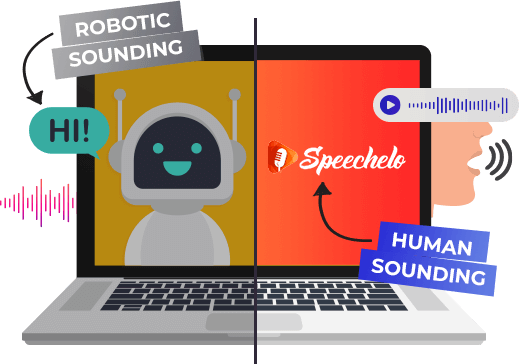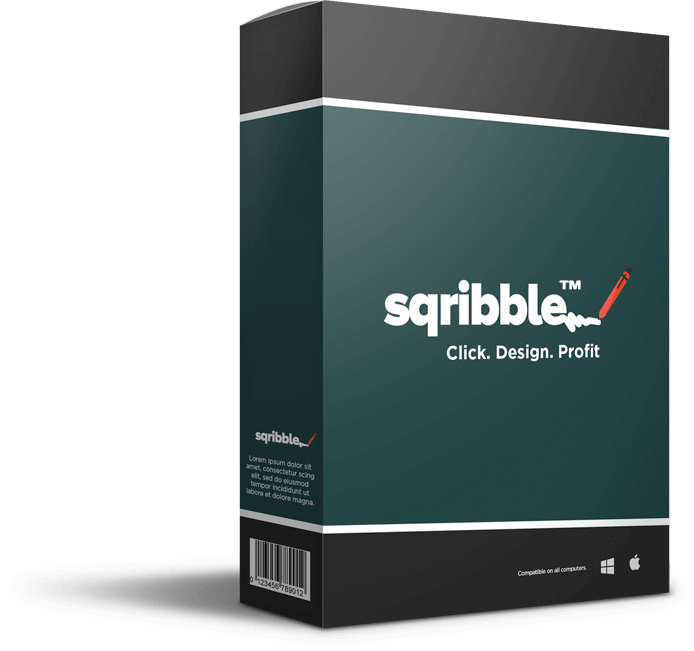Marketing That Connects and Converts written by John Jantsch read more at Duct Tape Marketing
Listen to the full episode: Overview In this episode of the Duct Tape Marketing Podcast, John Jantsch interviews Talia Wolf, internationally recognized conversion optimization expert, keynote speaker, and founder of GetUplift. Talia shares insights from her new book, “Emotional Targeting: When Hearts Boost Sales, Own the Market,” and explains how brands can dramatically improve […]
Marketing That Connects and Converts written by John Jantsch read more at Duct Tape Marketing
![]() Overview
Overview
In this episode of the Duct Tape Marketing Podcast, John Jantsch interviews Talia Wolf, internationally recognized conversion optimization expert, keynote speaker, and founder of GetUplift. Talia shares insights from her new book, “Emotional Targeting: When Hearts Boost Sales, Own the Market,” and explains how brands can dramatically improve conversions by understanding and appealing to what customers truly feel and need. The conversation covers the art and science of emotional targeting, how to move beyond features to customer outcomes, and why authentic, emotion-driven marketing is the new CRO superpower.
About the Guest
Talia Wolf is the founder of GetUplift, an industry-leading conversion rate optimization (CRO) agency. A pioneer of emotional targeting and customer-centric marketing, Talia has helped brands worldwide boost conversions through empathy-driven messaging and design. She’s a sought-after keynote speaker, author, and educator dedicated to helping marketers use emotion to create better customer experiences and real business growth.
- Website: getuplift.co
- Book: taliawolf.com/book
- LinkedIn: Talia Wolf
Actionable Insights
- Emotional targeting means designing websites and funnels that address people’s real feelings and needs—because all buying decisions are emotional.
- Most brands focus on features, pricing, and technology, but true differentiation comes from showing customers you understand their unique pains and desired outcomes.
- Emotional research involves qualitative interviews, surveys, review mining, social listening, and competitor analysis to uncover what truly matters to customers.
- Effective emotional targeting is never manipulative—it’s about meeting people where they already are emotionally and helping them solve real problems.
- The four-step emotional targeting framework: Conduct meaningful customer research, synthesize findings into actionable insights, audit your website for emotional resonance, and run strategic, hypothesis-driven experiments (not just button tests).
- A/B testing is powerful but must be rooted in customer research and hypotheses about what truly moves people—not random guesses or copying competitors.
- AI can power deep analysis of customer data and reviews, but strong insights come from asking the right questions and looking for emotional themes.
- Becoming an “emotional detective” gives marketers the tools to optimize every page, message, and customer interaction for real impact.
Great Moments (with Timestamps)
- 00:48 – Defining Emotional Targeting
Talia explains how emotion drives decision-making and why CRO needs to go beyond features. - 03:56 – Why Personas Don’t Tell the Whole Story
The shift from demographic segments to shared pains, needs, and emotional triggers. - 05:36 – Manipulation vs. Authentic Emotional Targeting
Talia clarifies why true emotional targeting is not about fear or pressure tactics, but empathy. - 07:37 – Speaking Directly to Your Ideal Customer
How Teamwork and other brands use emotional targeting to win customer loyalty. - 09:43 – Addressing the Real Pain
Why acknowledging challenges (like migration or complexity) can build trust and drive conversions. - 11:09 – The Four-Step Emotional Targeting Framework
Research, synthesis, auditing, and meaningful experimentation for CRO success. - 14:25 – Using AI for Emotional Insights
How AI and data analysis can help surface the true voice of the customer. - 16:49 – The Realities of A/B Testing
Why most tests fail—and how emotion-based hypotheses create learning and impact. - 19:41 – Becoming an Emotional Detective
Talia’s call to action for marketers to dig deeper into customer feelings and motivations.
Pulled Quotes
“Emotional targeting is not manipulative. It’s about meeting people where they already are emotionally and helping them solve real problems.”
— Talia Wolf
“If you can identify the real why behind the purchase, there’s no stopping you.”
— Talia Wolf
John Jantsch (00:00.767)
Hello and welcome to another episode of the Duct Tape Marketing Podcast. This is John Jantsch. My guest today is Talia Wolf. She’s an internationally recognized conversion optimization expert keynote speaker and founder of GetUplift, a leading CRO agency. Known for her pioneering work in emotional targeting and customer-centric marketing, Talia helps brands around the world dramatically improve conversions by focusing on what their customers truly feel and need.
We’re gonna talk about our latest book, Emotional Targeting. When hearts boost sales, own the market. So, Talia, welcome to the show.
Talia Wolf |
Getuplift (00:37.88)
Thank you for having me, I’m excited.
John Jantsch (00:40.499)
So let’s just define, because I imagine people would have lots of definitions for like, what is emotional targeting?
Talia Wolf |
Getuplift (00:48.436)
Well, emotional targeting is the art of creating websites and funnels that appeal and address to people’s emotions. I run a conversion optimization agency and my role is to help brands increase conversions. And the emotional targeting framework is what I developed to help companies increase conversions using emotion.
because people make decisions based on emotion.
John Jantsch (01:19.125)
So let’s try to make it even more tangible. you, can you walk through a time when you, know, the typical sort of feature first, you know, web page that, you know, here’s all of our stuff and what it does. can, can you kind of walk through somebody that you were called in? You could see that was hurting their conversions and then you got them to change their language and create a better outcome.
Talia Wolf |
Getuplift (01:41.142)
Yeah, so we’ve done this with hundreds of brands really, but the go-to is really how we essentially see that most websites are very, very focused on pricing, features, technology, we’re powered by AI, know, that stuff, and kind of forgetting the, right, whatever, the only one platform for X or powered by AI or we’re the number one platform for something else.
John Jantsch (01:59.059)
We’re gluten free, right?
Yeah. Yeah.
Talia Wolf |
Getuplift (02:10.826)
So everyone sounds the same and looks the same and done this with multiple companies from Strata, Identity Orchestration to Teamwork, which is a project management solution to also e-commerce sites and really a lot of different types of companies. Normally what happens is one notice that there is a very big kind of focus on highlighting the technology and the pricing. And what we’ve forgotten is that there’s people behind the screens that
are making decisions that aren’t just about integrations and the technology behind it. So what we do is we run emotional targeting research to identify why people really buy from them. So once they’ve checked the pricing and it’s like in their category and the integrations all work and that they have all the features that they made in their little shopping list, how do they make a decision? What matters to them?
How do they feel right now? What are they struggling with? What pains do they have? And how do they want to feel after finding a solution? And we map those all out onto the customer journey, and we run experiments to see if different messaging, different design, different UX can help increase conversions when we make it more customer focused about their results.
John Jantsch (03:30.207)
So, know, traditional marketing is like we have personas and we have segments and we have demographics and psychographics of our clients. you know, I think increasingly people are discovering that their best clients don’t all like fit into a persona. mean, they’re, they have a need or a problem or a pain. They may look completely different, right? So how do, how do you kind of zero in then on, on what the emotional triggers, can I use that word triggers are?
Talia Wolf |
Getuplift (03:56.94)
Yeah. So I love that differentiation because, you know, we’ve been told for decades that we need to be data driven and data driven means knowing personas like their segmentation, their agenda, location, the browsers that they’re using, the devices, their age. So we kind of quantify people into segments. And then it’s really, really hard to actually write copy or choose images or know what to even say to people to convert.
But when you start zeroing in on the pains, we actually notice that most people, no matter if they’re a 70 year old man in Nebraska or a 15 year old kid from the UK, they’re all kind of experiencing the same emotional issues and they have the same pains and hesitations and concerns and they want to feel certain ways. So the way that we go about it is that we conduct research and the research is qualitative research.
which means we conduct interviews on customers. We do surveys both on customers and on visitors. And we also do something called review mining and social listening, and we do an emotional competitor analysis. So essentially we are listening to the conversations that are happening on Reddit, on LinkedIn, on Quora. We are mining through all the reviews that your competitors are getting or that books.
that are trying to solve the same thing as your product or your service are doing. And we’re listening to how people describe their problems and their issues and what’s keeping them up at night.
John Jantsch (05:36.159)
So how do you balance the fact that some emotional targeting is actually manipulative? It’s like, understand that you’re really afraid of this thing, so I’m going to make you more afraid, and that’s going to get you to buy, or I’m going to create scarcity so that you’re worried that you won’t get it. So how much of that is manipulative? How much of that is authentic?
Talia Wolf |
Getuplift (06:00.504)
Thank you so much for that question. I wanna be really, really clear. Yeah, emotional targeting is not manipulative. You’re not trying to make anyone feel anything. The whole framework is based around the idea and the fact that every decision that we make in life is based on emotion and people are coming to our websites already feeling things.
Our role and our job as marketers is to relate to them, to appeal to the emotions that they’re already feeling and help solve those problems. Anyone who is trying to manipulate people, trying to scare or fear mongering or anything is not emotional targeting. Emotional targeting is really just understanding the underlying emotions that are already there, appealing to them and creating an experience
that answers people’s questions and actually helps them.
John Jantsch (07:01.801)
Yeah. So, you, in a lot of ways that the ultimate test is you want the reader to go, you got me. I mean, would that, would that be accurate? Yeah.
Talia Wolf |
Getuplift (07:08.066)
Yes, and I think that’s the point because as yeah, like as I mentioned before, at the end of the day, once we’ve gone through our shopping list of the mandatory stuff, we’re left with trying to decide, okay, but how do I make a decision between product A, B and C that all look the same, all have the same features, all have the same technology and more or less the same pricing, it’s down to that emotional hook. Does this company solve the particular specific problem that people like
John Jantsch (07:16.979)
Mm-hmm.
Talia Wolf |
Getuplift (07:37.934)
like me have, and we’ve seen this a lot. So even with Teamwork, for example, which is a project management solution, can everyone in the world use their project management solution? Absolutely, they have an incredible product. But if you are a person, a company that serves clients, so if you face clients, if you are an agency, a consultant, if you are a creative team that serves clients and you have retainers and
projects that are client facing, Teamwork is the best product for you. And they’ve done everything in their product and in their marketing to make sure that when you are an agency owner and you land on their website, you know that Teamwork was designed for your kind of work. And you know that because they’re talking about their specific problems that agency owners and project managers and agencies and client facing teams face.
every single day, which is profitability, knowing if you’re profitable or not, knowing if Pam on accounting is actually doing her work or not. So you could just say, we have great reporting, which is what everyone does. But teamwork and the work that we’ve done with them over the years has really helped solidify the fact that when someone comes in, they can clearly see that this product was built for them for the work that they do that solves their particular issues and problems.
And I think a lot of companies are scared to do that, because you’re afraid to eliminate potential buyers. But we don’t understand that by speaking to everyone, we’re actually alienating the people that actually would buy from us, would stay with us, and would continue to buy from us.
John Jantsch (09:21.129)
You know, one of the things I really, admire is when a company admits like this part of the process is going to be hard, you know, let’s just face it. It’s, know, and they really honest about that. We recently went shopping for a new email service provider CRM and category that is like you said, I mean, line them all up and they all say the same thing. however, the company we went with.
Talia Wolf |
Getuplift (09:29.579)
Yeah.
Talia Wolf |
Getuplift (09:40.782)
Yep.
John Jantsch (09:43.589)
was the company that spent the greatest amount of time telling us how hard it is to migrate, but that they were going to be with us every step of the way. And they were not even going to charge you until we’ve migrated you. And that was the deal for us because when you look at them on the surface, they all seem to do the same thing. But our pain was, it’s a pain in the butt to switch. And that was their focus.
Talia Wolf |
Getuplift (10:06.476)
I love that and I think the fact that they recognize that because I talk a lot in my book about the unconscious and the subconscious stuff. So there’s things that we say that we think like, it’s the pricing, it’s the feature or, actually underlying that is so many fears. Like what if I migrate all our emails and something happens and a freak accident happens and everything gets deleted and everything gets lost. Like that’s a real fear. What if I onboard a product
John Jantsch (10:32.693)
Yeah, yeah.
Talia Wolf |
Getuplift (10:35.5)
and everyone hates it and thinks, you know, I failed. There’s so many emotions involved in a process like that. So actually knowing and saying, hey, look, this is hard, this sucks. We know you’ve tried all of these other things, but we’re gonna help you. We’re gonna be there every step of the way. That’s knowing your audience and understanding their pains. And that’s incredible.
John Jantsch (10:39.903)
Yeah.
John Jantsch (10:56.565)
Yeah. So we’ve gotten halfway through and I haven’t actually asked you to outline. You have a, I think it’s in chapter two, a four step emotional targeting framework. So, without giving everything away here, you probably ought to at least set up the four steps.
Talia Wolf |
Getuplift (11:09.335)
Hahaha!
Okay, so there’s four steps. The first step is running meaningful research, customer research, which I kind of spoke about before, but in the book, I really explain how to run this research and how to actually ask the right questions, how to know how much information to actually collect. The second step is synthesizing the research. And this is actually really important because a lot of the times we’re collecting a ton of data, but we don’t know how to…
Turn it into actual insights that we can use So I talk about the different emotional triggers the most common emotional triggers that people have how to put it into different buckets How do I identify when something’s a pain when something’s a trigger when something’s more of a desired outcome? in step number three
We take all of our research and we audit our website. And this is super important because when we think about a CRO audit, we think, okay, I’ll do a heuristic analysis. I’ll check that I have one CTA and not two. But when I talk about an audit, I’m actually talking about an emotional targeting audit, which is a set of questions that you ask yourself to, it’s strategic questions. Am I appealing on an emotional level? Can people clearly see their specific pains reflected?
Can people see what’s in it for them? So there’s a set of questions that you ask yourself and you kind of make a check for every time you’ve done that. And I think what’s incredible here before I get to the full step is that the hardest part in conversion optimization isn’t running tests and isn’t identifying where the problem is. It’s knowing what the heck is wrong and what changes should I make on a page? When you’ve done this research and you start doing the audit,
Talia Wolf |
Getuplift (12:57.866)
It’s incredible how quickly you can see the problems. we’re using stories that don’t resonate. We’re highlighting features people don’t care about. We’re talking about outcomes people don’t care about. So it’s so much easier to understand why people aren’t converting and come up with hypothesis, which leads us to step number four, which is running meaningful tests. That’s when we say, okay, my hypothesis is let’s say people can’t…
clearly and easily see that this product was built for them. So now I’m going to try and show this on the page, on my comparison page, on my homepage, in my navigation, and I’m going to see if by weaving in stories and testimonials and the features that people care about, will that increase conversions? So we do research, synthesizing, emotional audit, and running meaningful experiments that aren’t button tests.
John Jantsch (13:49.033)
Okay.
Talia Wolf |
Getuplift (13:55.01)
but are actually strategic so that you can learn from them even if you don’t increase conversions.
John Jantsch (14:01.407)
You know, you talked about reviews and, you know, looking at reviews, analysis, looking at questions on core room thing and things, you know, we have found over the years that, that, that, you know, the, best messaging usually comes up right out of the mouth of a customer. and it’s in their voice, their words, it’s probably not stuff that we think is that sexy, but it’s like what they’re really feeling. And, and it’s amazing. And,
Talia Wolf |
Getuplift (14:15.81)
Yes.
John Jantsch (14:25.609)
What are we 14 minutes in? I’m first mentioned of AI. But one of the things that AI has really done, I think is, you a lot of people are using it for writing, but it does amazing analysis. So now you can take tons and tons of data. You take all your sales call transcripts and just dump them all in there. And it’s going to be able to synthesize, you know, here’s the themes.
Talia Wolf |
Getuplift (14:47.342)
100%, you know, garbage in garbage out. So if you can only feed AI with segmentation and raw data, that’s what you’re going to get back. And when you’re trying to write copy with it, and that’s the information you fed it, you’re going to get really bad copy. But other than that, you’re going to get really bad insights. When you feed it valuable insights, and you ask the right questions in AI, and you’re asking it to, hey, tell me what are the top
John Jantsch (15:16.629)
.
Talia Wolf |
Getuplift (15:16.654)
three pains people mention from this thousands, like 1000 answers in my customer survey, what are the top three pains people mentioned? When you ask the right questions and you have really valuable data, that’s when you get the magic. That’s when you get incredible things from AI that you can actually use. And then you can also use it for writing copy. But what’s happening right now is people are just, you know, using basically feeding it garbage data.
And then that’s why when you go online and you’re searching for any kind of solution, everything looks the same and you could probably just swap out logos and you wouldn’t even know the difference.
John Jantsch (15:54.385)
Yeah, no question. In fact, I contend you could probably blank out all the logos of five different websites and then see if people in any of those companies can identify theirs. Because they’ll even read everybody else’s and theirs and go, I don’t know. So talk a little bit about A-B testing, because I think that’s a category that is so valuable, but so under your.
Talia Wolf |
Getuplift (16:12.6)
easy.
John Jantsch (16:21.429)
because a lot of people go, this is our best shot, put it out there. Why isn’t it working? You know, as opposed to, you know, and again, you know, one of the promises of AI is all of sudden now we’ve got potential for dynamic and personalization to where, you know, people can actually come and hear the message that we believe will be relevant to them. So why aren’t people doing more testing? A and B, guess would be part of that question would be how to do it effectively.
Talia Wolf |
Getuplift (16:49.986)
Well, testing is hard, right? It’s really, really hard. Like it’s not actually easy if we go back to like being honest and telling our customers. Avery testing is hard, but I think it’s also hard for most people because we’re on a hamster wheel. And I talk about this a bit about this in my book, that
John Jantsch (16:51.945)
Yeah.
John Jantsch (16:57.575)
Well, no, forget it. I want the magic pill. Give me the magic pill.
John Jantsch (17:09.439)
Yeah.
Talia Wolf |
Getuplift (17:13.922)
When we start A-B testing, we’re kind of just guess working our way around it and we’re Googling or searching on AI for best practices and we’re copying our competitors. And then we throw stuff on this like whatever tool that we’re using and we’re like, it doesn’t even work. It doesn’t even increase conversion. So why am I even wasting my time? And that’s because we’re running meaningless tests with no strategy behind it. Not to mention, obviously the fact that you have to get everyone on board when it comes to A-B testing, you have to sell your ideas.
There’s a lot of pushback. always a lot of like politics inside the organization and it’s just hard. But actually this is why emotional targeting is so great because when you are doing the hard research and you finally have a good hypothesis, you can A, get internal buy-in really quickly because you could say, look, guys, I’ve done the research. Here’s what our customers and our prospects are saying. And here’s what we’re saying on our website. Like we’re completely missing the mark.
I have an idea, I’m not gonna do a homepage redesign, don’t worry, but I’m gonna send out a few emails and I’m just gonna check this or I’m gonna test this on a landing page and let’s just see. So first you get buy-in. Second, when you run emotion-based tests that are based on a real hypothesis, a meaningful hypothesis, whether you increase conversions or not, you’re going to learn something.
Now, if you’re just testing a blue versus a red button and it decreases conversions or increases conversions, there’s nothing you can do with this test. Like you can’t actually say, I’m gonna change all my buttons to red now. Like there’s nothing to actually do with it. But when you learn that, let’s say, my prospects are deeply impacted by their social image. They really care about what other people think about them and buying this product.
makes other people think a different way about them and this matters. You can weave that into your ads, your emails, your landing pages, your comparison page, like everything. So I think the reason it’s so hard is again, like we’re just running meaningless tests. It’s technically hard. You need a lot of people, you need a lot of buy-in, but if you do it the right way, it’s super rewarding and you can break all those silos in the company and say, look, we tested this, we learned this. Hey, sales team, you should be using this content. Hey,
Talia Wolf |
Getuplift (19:31.79)
product team, we’re learning that people really care about it. You should be talking about this product this way and this feature this way. Yeah.
John Jantsch (19:41.533)
It is pretty amazing. know, over the years it’s part, it’s largely accidental on my part, but over the years, you know, we’ll change something because it’s not working. And then all of sudden it’s like, all we did was change the headline. And now everybody’s like booking appointments. It’s like magical. It’s unbelievable. So, so you end the book with a call to action, to employing people, imploring people to become emotional detectives.
So how does that play out in your work?
Talia Wolf |
Getuplift (20:18.51)
Well, most of all work when we become emotional detectives is doing the research and really identifying those emotions and why people buy because I truly believe that if we whatever you’re selling, if you can identify the real why behind the purchase, there’s no stopping you. There’s nothing you won’t be able to do in terms of optimizing every single page.
and asset that you create. the book and my website and my courses and, and, know, the consulting, the agency, everything is about helping teams become emotional detectives, getting to understand more about their customers than just their behavioral data, but really understanding the people behind the screens so that they can create user experiences and websites that people want to convert to and actually like.
John Jantsch (21:17.269)
I’ll tell you, appreciate you taking a few moments to stop by the Duct Tape Marketing Podcast. Is there some place you’d invite people to connect with you, learn about your work, obviously learn about the book?
Talia Wolf |
Getuplift (21:25.26)
Yeah, well you can get the book at taliawolf.com slash book or you can follow me on LinkedIn. I’m happy to connect. And also on our website, get uplift.co, which is my agency.
John Jantsch (21:38.901)
Again, thanks for spending a few moments with us. Hopefully we’ll run into you one of these days out there on the road.
Talia Wolf |
Getuplift (21:43.95)
Thank you for having me.
Sign up to receive email updates
Enter your name and email address below and I’ll send you periodic updates about the podcast.
Recommended Story For You :

How To Make $3493 Commissions Without Doing Any Selling

Successful dropshippers have reliable suppliers.

People Think I Use A Professional Voiceover Artist. NO! I Just Use Speechelo!

Make Money Testing Apps On Your Phone Or Tablet

Make More Money or Lose Everything

Sqribble Is The ONLY eBook Creator You’ll Ever Need.

Work & Earn as an Online Assistant

Create Ongoing Income Streams Of $500 To $1000 Or More Per Day

It's The Internet's Easiest Side Business.




